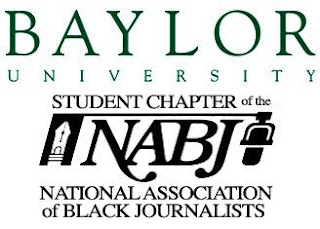New media is a revolution that has changed the news industry and the way people communicate, said Jay Hicks Thursday during a presentation at Baylor University.
Hicks, who is the Director of New Media at KWTX-TV, said the media industry is all about sharing, transparency, collaboration and building trust with peers. He shared new media trends with reporting and writing students in Dr. Mia Moody Ramirez's class.
“In the 1970s and 80s journalists reported a story and audiences read it," he said. "Now, people share their own thoughts using social media.”
“In the 1970s and 80s journalists reported a story and audiences read it," he said. "Now, people share their own thoughts using social media.”
Illustrating the importance of social media, he pointed out that Facebook has around 800 million followers, Twitter has more than 10 billion tweets – and people upload more than
8,600 full-length movies a week.
8,600 full-length movies a week.
Hicks, who oversees KWTX’s social media efforts, develops and executes content on multiple-platforms including KWTX.com and the station’s mobile Web site. One thing that has become clear in the last few years, is everyone is a reporter, he said. People tell their own stories. However, even with the popularity of new media, students must have traditional journalism skills.
Accuracy, credibility, writing and storytelling are all very important in today’s journalism industry, Hicks said.
Accuracy, credibility, writing and storytelling are all very important in today’s journalism industry, Hicks said.
“No matter what you want to do in the journalism industry, you must be able to communicate. Facebook and Twitter are platforms, but they change daily, " he said.
For instance, the importance of confirming information was illustrated when the story about Gadhafi’s death broke. Hicks said he waited until he could verify it using reliable sources. Then he posted information about the leader’s death on KWTX’s website and Twitter page.
He also noted that while traditional sources such as. Reuters, AP Style and CNN, are important for today’s communicators; bloggers, friends and relatives also serve as an important resource.
“In the news industry, we usually try to take big stories and figure out how they affect Central Texans,” he said. “We localize them by talking to our viewers on Twitter, Facebook and our Web site. Some of them end up in our on-air stories.”
Finally, Hicks emphasized the importance of staying ahead of the curve




